
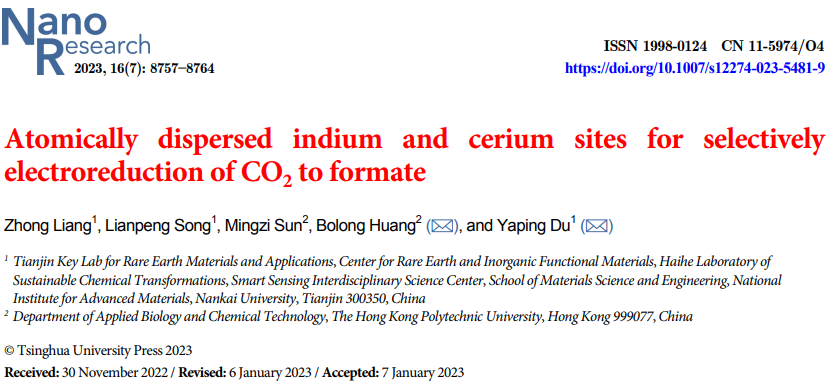
02 Preparation Method
Through specific synthesis methods, detailed structure and coordination environment of the catalyst were studied using AC-HAADF-STEM images and EXAFS spectra.
03 Catalyst Structure Analysis
AC-HAADF-STEM Images: Show isolated bright spots in InCe/CN, indicating atomic-level dispersion of In and Ce atoms in the CN matrix.
EXAFS Spectra: The Fourier transform extended EXAFS of InCe/CN shows only one peak, further confirming the atomic-level dispersion of In and Ce.
04 Electrochemical Performance Evaluation
I–t Test: Conducted in CO2-saturated 0.1 M KHCO3 solution, InCe/CN exhibited a higher current density than in N2-saturated electrolyte.
Faradaic Efficiency (FE): The FE of InCe/CN for HCOOH is significantly higher than that of In/CN and Ce/CN, indicating that the introduction of Ce single-atom sites significantly enhances the selectivity for HCOOH.
Stability Test: Long-term I–t tests showed that the FE of InCe/CN remained stable over six hours without significant decline.

05 Reaction Kinetics Analysis
Tafel Slope: The Tafel slope of InCe/CN is low at 351.4 mV/dec, indicating fast reaction kinetics.
Electronic Structure Modulation: DFT calculations show that the introduction of Ce-4f orbitals significantly optimizes the electronic structure of In-5p orbitals, facilitating electron transfer to CO2RR intermediates.
06 Active Site Analysis
Active Sites: In is the main active site for CO2RR, and the introduction of Ce enhances the intrinsic activity of In without increasing the number of active sites.
Electron Transfer: The introduction of Ce-4f orbitals improves the efficiency of electron transfer to intermediates and optimizes the electronic structure.
07 Illustrated Guide
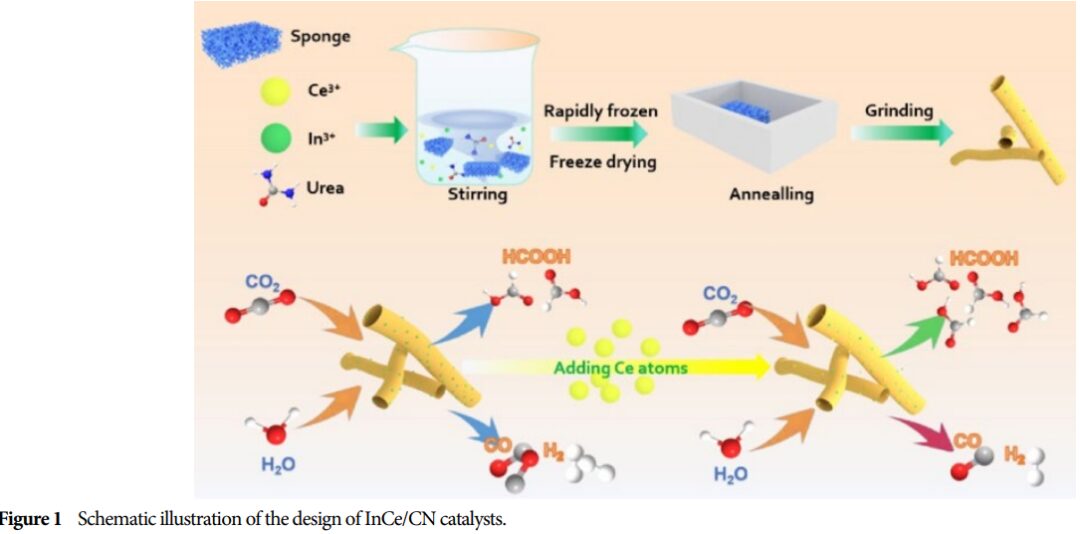
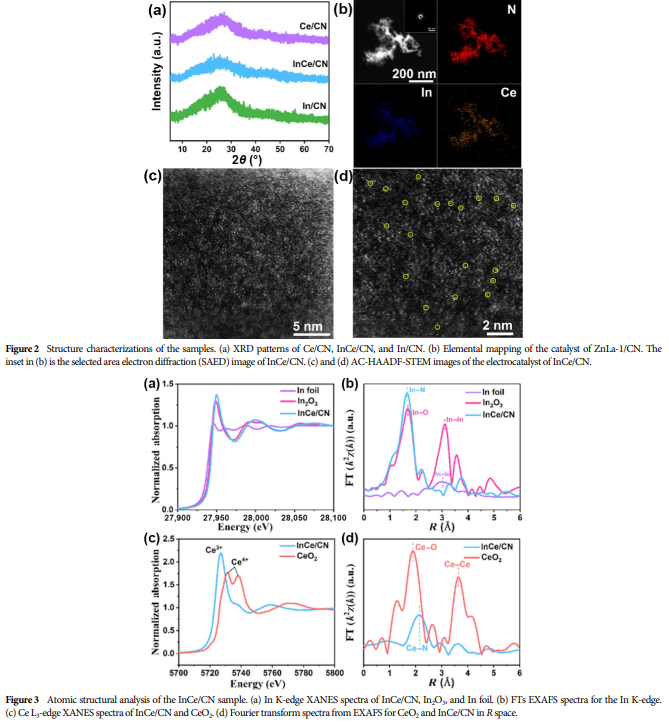
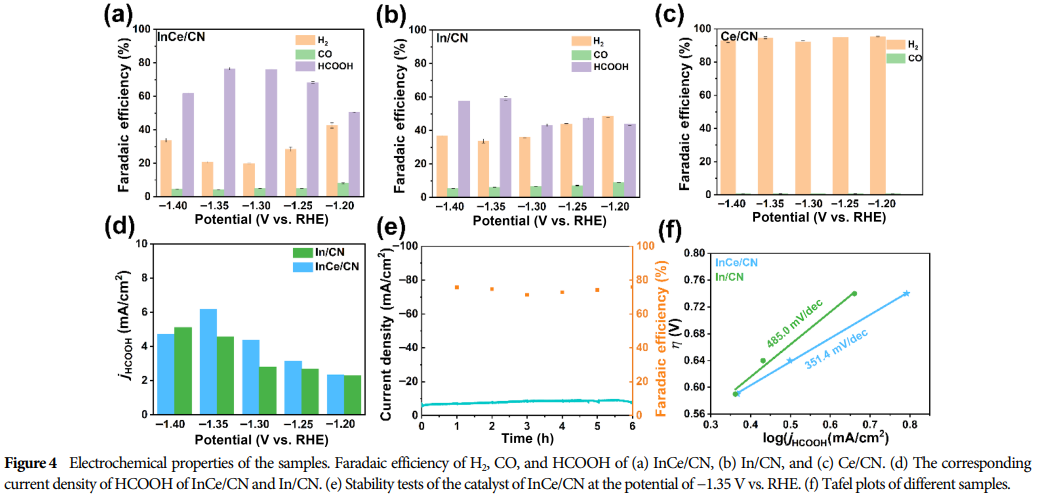

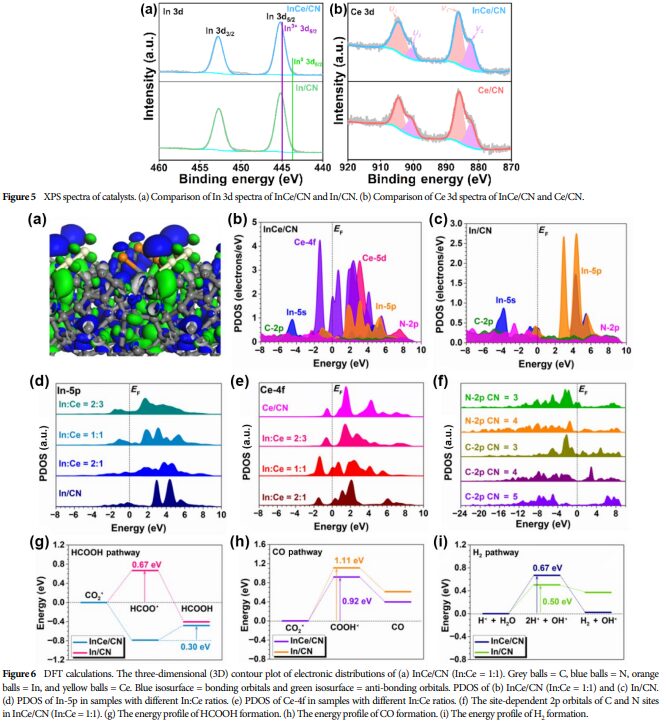
08 Catalyst Design Innovation
Application of Lanthanide Elements: This study innovatively introduces the lanthanide element Ce into SACCs, expanding the design scope of SACCs.
Combination of Main Group Elements and Lanthanide Elements: The combination of In and Ce provides possibilities for more applications, such as modulating the reaction pathways and performance of CO2RR.
09 Conclusion
-
Successful Synthesis: This study successfully synthesized novel SACCs (InCe/CN) with atomically dispersed In and Ce active sites.
-
Performance Improvement: InCe/CN exhibited excellent electrochemical performance and stability, with significantly improved selectivity for HCOOH.
-
Design Insights: This study provides new insights into the design of SACCs, especially the introduction of lanthanide elements to modulate the reaction pathways and performance of CO2RR.
Summary: This study successfully synthesized novel SACCs (InCe/CN) with atomically dispersed In and Ce active sites, and conducted in-depth research on their performance through electrochemical tests and DFT calculations. InCe/CN exhibited excellent electrochemical performance and stability, with significantly improved selectivity for HCOOH. This study not only provides new insights for the design of SACCs but also offers new directions for catalyst development in CO2RR.
This article is provided by the Hydrogen Energy Research Assistant.
Original link:
https://www.sciopen.com/article/10.1007/s12274-023-5481-9
▲ Disc Electrode Spin Coater